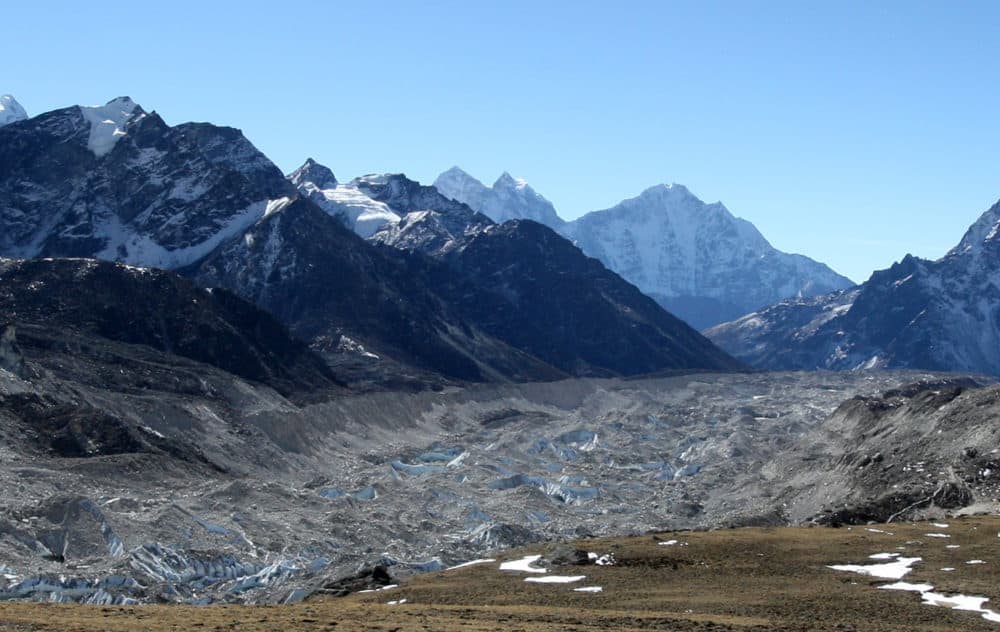Advertisement
At Least One-Third Of Himalayan Glaciers Will Be Gone By 2100, Report Finds

Almost 2 billion people depend on water from the Himalayan mountains. By 2100, though, at least one-third of the region's glaciers — which supply freshwater to China, India and Pakistan — will be gone, according to a new report.
“Between a quarter and a third of the human population on this planet depend on the water resources from the mountains in this region,” says Laurie Vasily, head of knowledge management and communications at the International Centre for Integrated Mountain Development. "So it's a critically important resource of course for the region, but a global resource also.”
Vasily tells Here & Now's Jeremy Hobson glacial melting will have a massive impact on the Hindu Kush Himalayan region, which spans from Afghanistan to Myanmar, wreaking havoc on agriculture, food and water security and individuals’ livelihoods.
Glacial melting can be attributed to a combination of factors, Vasily explains, including climate change and land-use changes. What’s happening, she says, is elevation-dependent warming: As the elevation increases, warming does too.
“You've got the glaciers, you've got the ice, you've got the snowpack, and if the warming is greater in those areas, then the ice and snow — which actually act as water storage — diminish,” she says. “Predicted after 2050, the meltwater will be less, and that meltwater feeds into the river supply across the 10 major Asian rivers.”
Even though the report predicts disastrous effects more than 75 years in the future, Vasily says significant glacial change is already happening. Therefore, to avoid environmental disaster, like outburst flooding at glacial lakes, investments need to be made in monitoring glaciers.
“Unless we do that, we won't be able to take the preventive actions that help communities to move out of areas in case they're at risk,” she says.
Chris Bentley produced this interview and edited it for broadcast with Kathleen McKenna. Jackson Cote adapted it for the web.
This segment aired on February 8, 2019.

